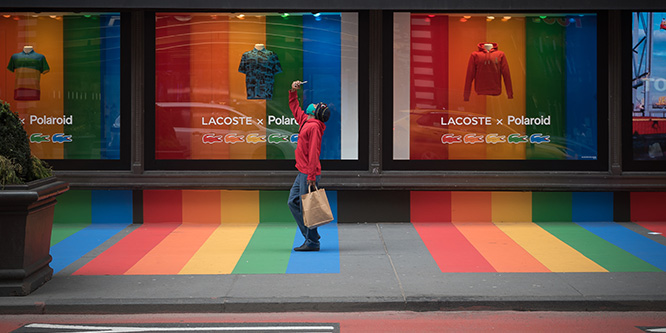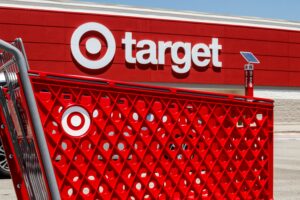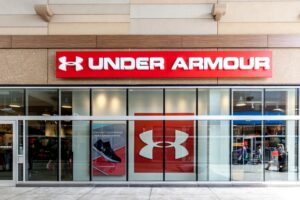
Photo: Getty Images: Massimo Giachetti
June 9, 2021
Did the pandemic fundamentally shift retailer/vendor relationships?
The novel coronavirus pandemic brought about changes to how retailers and consumer brands conducted business with one another. Just how many of those changes will stick remains to be seen.
A Wall Street Journal article earlier this week reported that some retailers who negotiated longer payment terms from suppliers during the early days of the pandemic are looking to continue under those same rules even as the spread of COVID-19 slows amid rising vaccination rates.
The report points to the experience of Macy’s, which negotiated payment terms that saw it pay vendors 163 days on average during the first quarter, up from 134 days during the same period last year, based on data from The Hackett Group. Macy’s, according to the Journal, said it is using a different calculation to pay suppliers that actually cuts days of payment, although that isn’t reflected in the numbers reported.
The retailer is looking to keep extended terms in place, suggesting management is maintaining a cautious fiscal approach even as its CEO, Jeff Gennette, plays up its ability to maintain “accelerated profitable growth in 2021 and beyond.”
Macy’s reported a 63.9 percent gain in same-store sales during the first quarter as shoppers began returning to stores and online sales climbed upward. The performance stood in stark contrast to the first quarter of 2020 when sales fell off over health restrictions imposed by the pandemic’s outbreak.
Conventional wisdom about Macy’s is that it is, along with most of its department store rivals, part of a retailing vertical that lacks relevance for consumers, particularly younger generations. Weaknesses that were evident for years prior to the pandemic may be obscured as the economy opens, but fundamental problems persist.
Even as some retailers look to keep extended payment terms, others are paying up early to support small vendors. Walmart expanded a supplier diversity program last month that paid smaller vendors more quickly. The retailer said it took the action because the biggest challenge these companies face to achieving growth is access to working capital.
- Some Companies Are Taking Longer to Pay Suppliers Despite Recovery – The Wall Street Journal
- Macy’s CEO says recent gains are real and better things are ahead – RetailWire
- Macy’s, Inc. Reports First Quarter 2021 Results – Macy’s press release
- Will Walmart’s early payment program be a difference-maker for minority vendors? – RetailWire
- Accelerating Our Commitment to Diverse and Minority Suppliers – Walmart blog
Discussion Questions
DISCUSSION QUESTIONS: How have retailer and vendor relationships shifted since the pandemic hit last year? What changes, if any, do you think are here for the long term?
Poll
BrainTrust
Carol Spieckerman
President, Spieckerman Retail
Recent Discussions







The pandemic was a test of retailer/vendor relationships, and the results varied. Some retailers, like Walmart, improved relationships — especially with small suppliers as noted. However some retailers refused shipments, refused to pay invoices and generally strung their suppliers out. As we head into what appears to be a strong recovery, retailers are going to need great relationships with their suppliers – how they were treated through the pandemic will impact go-forward relations.
I know of many retailers that still haven’t paid their suppliers and this is just detrimental to the supply chain. If suppliers lose out, eventually so will the retailer.
Building lasting and trusting relationships with vendors will not only allow vendors to grow with the retailer, but will also help align suppliers with retail goals like transparency and sustainability. Putting vendors at risk by extending payment terms or not paying at all, especially the ones overseas, will hurt everyone and the suppliers and factory workers are the ones that will lose.
The changes to vendor relationships have been happening for some time. There are really two dynamics.
One is lower quantity buys from retailers to brands. The second is extended payment terms to buyers. Yes the pandemic accelerated this, but the primary cause is a weak retailer not the pandemic.
Everything smells like consignment or dropship these days.
There are certain incontrovertible truths. One is that the retailers that pay their suppliers on time or with anticipation are the first to receive hard-to-get products when there is a shortage. The decision as to which is more important – product availability or cashflow – is up to top management’s philosophy for running a business.
It’s a business negotiation. Vendor squeeze is fairly common. The same applies on the other side as well. Plenty of vendors ask for pre-payment or advances, particularly for new customers when shipping from overseas.
Even Macy’s is probably doing it to vendors that it can get away with and prioritizing certain vendors. It is Accounts Payable 101.
Retailers that lord their leverage over suppliers end up regretting it when supplier support and flexibility is needed. Department stores have notoriously done so throughout retail history (at their peril) and even though Walmart shut down some of the industry shenanigans, old habits die hard. Beyond payment terms, some brand marketers and solution providers made real headway during the pandemic simply by showing up and staying on their hustle as competitors retreated. Zoom meetings and reduced travel are here to stay as suppliers and retailers realize how much can be accomplished virtually. Either way, it would behoove suppliers to play a mean game of intel catch-up since the retailers that have made it this far haven’t been standing still.
There has always been tension between retailers and vendors, and in my opinion some level of tension is good, even trickling some of that goodness to consumers in the form of more efficient execution/lower prices. Having said that, I have seen it go way too far, leaving small suppliers pinched to the point of causing harm to their business. I applaud Walmart for prioritizing small vendors; it appears that they’ve gotten the message that consumers do care about “local” and that having strong business partners at that level is truly good for business.
A bigger issue is vendors simply can’t deliver enough product for demand. It’s not like they didn’t know this day would come. Those who will pay for the additional shipping/production costs and get it in the hands of retailers will win loyalty.
The dynamic between brand and retailer has shifted from vendor relations to partnerships. As digital channels become more routine to shoppers, brands are better able to build direct relationships and loyal advocates among consumers. Retailers must become active participants in the success of brands to maintain access to the brands customers want, unite marketing spend and negotiate payment terms that will help both sides of the partnership achieve sustainable profit margins.
The cliched concept of “win/win” was put to the test during the pandemic. The issue of cash flow is a two-way street, and chances are good that Macy’s is putting the squeeze on smaller vendors who can least afford it. To Bob Phibbs’s point about supply issues, the retailers who cultivated relationships in 2020 are probably sitting on adequate quantities of product today as demand takes off.
Relationships have changed, and this will continue. Vendors are experiencing tougher procurement of product to continue manufacturing, while carrying large account receivables, and trucking companies are having a hard time finding enough drivers to move freight in time for optimal sales. And there are large segments of retailers working off account payables as best as they can, (and also experiencing increased costs which may put them in a position of not receiving goods to meet their time sensitive needs). All-in-all, I think it is going to take some time for this bumpy road to smooth out, which means cooperation and partnering will be the words of the era.
Retailers and brands are increasingly adopting supply chain financing arrangements with banks to extend payment terms with their vendors while giving them an option to get paid much earlier for a small fee up to ~1 percent of the outstanding.
One of the biggest shifts with retailers and vendors is the drop-ship, D2C, and/or concessions models. Inventory investments are a substantial financial burden for large companies (department stores, large chain stores), so having the vendors ship directly to consumers helps elevate this burden. With that said, there is a risk that the customer may start buying directly from the vendor. The other major change with retailers and vendors is a more collaborative supply chain to help mitigate markdowns and slow sellers while, at the same time, improving agility with orders including speed to market. Long term the industry will see reduced inventory holdings by retailers and more direct-to-consumer partnerships.
The mindset of retailers applying muscle and brute force to get their way with vendors and suppliers was born in the ancient times before e-commerce. Most brands didn’t have a lot of options when it came to access to customers. This is a whole different world we live in now. The relationship has to be an actual partnership or the brand/vendor will explore alternative routes to the customer. The other way to look at it is that the muscle and brute force can now be applied by Amazon rather than the big department stores. Either way, brands and vendors have more pathways to the consumer today than they did many years ago.
Digital commerce started the shift, the pandemic accelerated it. But if you are a retailer selling someone else’s brand, and you start squeezing that supplier you really are biting the hand that feeds you.
The pandemic led to all types of situations, and led to many new relationships and business models, so the adversity probably led to strengthened relationships where trust and respect exists, and strained those relationships where the supplier is treated like a vendor — and not a partner.
In my particular case, I learned that all the travel to demonstrate we care about the relationship is worth about half the expense we were incurring prior to COVID-19, but also our prospects and partners learned that we can be very accessible. The old expression that “what goes around, comes around” will play out during the recovery and those that acted badly will have double the work to do to keep their business headed in the right direction.
Fundamentally, the vendor/retailer dynamic has always been in a state of flux. And it has often been a love-hate relationship. Couple that with supply chain issues, uncertain (and sporadic) shopper behavior, store openings/closings, and crippling payment terms and/or escalating shipping costs, and we have the perfect storm.
I believe the following will stick around post-pandemic: 1.) hybrid buyer meetings (we are never going back to total in-person meetings and line reviews); 2.) drop-ship and e-commerce fulfillment challenges (more pressure will be put on suppliers to help retailers drive the bottom line); 3.) promotion/pricing (in-store displays, signs, and specials will continue to evolve and pricing for both in-store and online will need to get even sharper); and 4.) demand planning (just-in-time inventory must be adjusted to ensure the supply chain is not depleted as future disruptions affect product availability).
Business relationships had to change during the pandemic. The need to understand the circumstances of each other and how you’re being affected is simply a requirement if you want to maintain a healthy partnership with your vendors. I think 2020 brought out people’s true colors and hopefully for most, showed how compassionate and cooperative businesses can be when faced with uncertainty and instability.